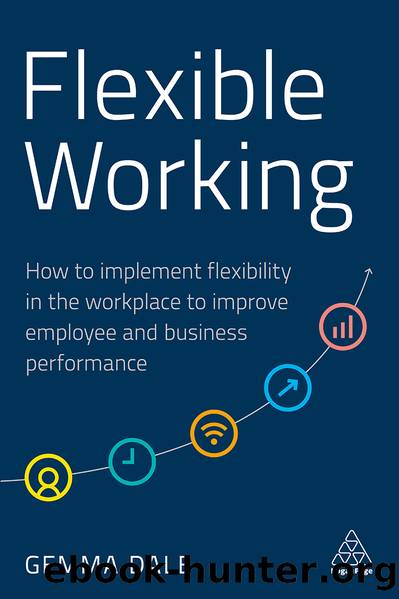Flexible Working by Dale Gemma;

Author:Dale, Gemma;
Language: eng
Format: epub
Publisher: Kogan Page, Limited
Published: 2021-12-15T00:00:00+00:00
Women and Equalities Committee Report (2016) Gender Pay Gap, House of Commons, publications.parliament.uk/pa/cm201516/cmselect/cmwomeq/ 584/584.pdf (archived at https://perma.cc/6TAU-X4KQ)
07
The barriers to flexible working, and how to overcome them
Chapter 6 explored the complex mix of myths associated with flexible working and flexible workers themselves. As well as these, there are also multiple (and sometimes interconnected) barriers to the effective application of flexible working at an organizational level, as well as its broader acceptance in the corporate world. According to CIPD research, the most commonly cited barriers to the use of flexible working arrangements are: the nature of work that employees do at their organization (27 per cent); negative attitudes from senior managers (15 per cent); and negative attitudes from supervisors and line managers (14 per cent) (CIPD, 2016).
Some of the barriers to flexible working are related to practical issues, whereas others are perceived or attitudinal. Fundamentally, many of the barriers that exist are cultural. Some of them are fairly typical to many organizations, but others are specific to the particular context, industry or role types. Through the identification of barriers, it becomes possible to plan strategies and take action in order to overcome or mitigate them â where an organization sufficiently desires to do so. This chapter will explore some of the main barriers and challenges relating to the adoption and acceptance of flexible working approaches.
Download
This site does not store any files on its server. We only index and link to content provided by other sites. Please contact the content providers to delete copyright contents if any and email us, we'll remove relevant links or contents immediately.
International Integration of the Brazilian Economy by Elias C. Grivoyannis(57322)
The Art of Coaching by Elena Aguilar(50013)
Flexible Working by Dale Gemma;(22949)
How to Stop Living Paycheck to Paycheck by Avery Breyer(19215)
The Acquirer's Multiple: How the Billionaire Contrarians of Deep Value Beat the Market by Tobias Carlisle(11675)
The Radium Girls by Kate Moore(10907)
Thinking, Fast and Slow by Kahneman Daniel(10584)
The Art of Thinking Clearly by Rolf Dobelli(8841)
Hit Refresh by Satya Nadella(8338)
The Compound Effect by Darren Hardy(7557)
Atomic Habits: Tiny Changes, Remarkable Results by James Clear(7211)
Turbulence by E. J. Noyes(7038)
Tools of Titans by Timothy Ferriss(6946)
How to Be a Bawse: A Guide to Conquering Life by Lilly Singh(6693)
Change Your Questions, Change Your Life by Marilee Adams(6641)
Nudge - Improving Decisions about Health, Wealth, and Happiness by Thaler Sunstein(6633)
Win Bigly by Scott Adams(6311)
The Black Swan by Nassim Nicholas Taleb(6190)
A Court of Wings and Ruin by Sarah J. Maas(6073)
